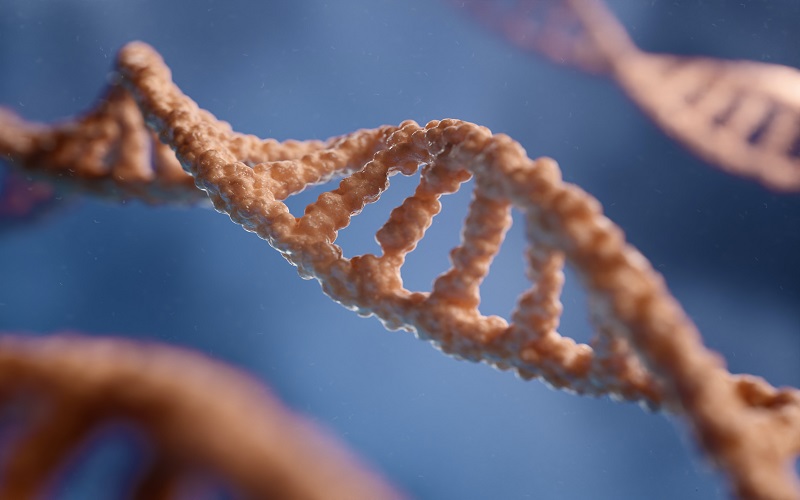Previously, it was thought that glial cells, which support neuronal activity, metabolize most of the glucose in the brain. However, by using induced pluripotent stem cells, the researchers found that neurons were able to take up glucose and process it into smaller metabolites. In mice, normal function of neurons depends on glycolysis. The findings could help develop new treatments for neurodegenerative diseases such as Alzheimer’s and Parkinson’s, and help understand how to keep the brain healthy as we age.
The human brain loves sweets and consumes nearly a quarter of the body’s sugar energy, or glucose, every day. Now, researchers at the Gladstone Institutes and the University of California, San Francisco (UCSF) have gained new insight into how neurons (cells that send electrical signals through the brain) consume and metabolize glucose, and how these cells adapt to glucose shortages.
Previously, scientists suspected that most of the glucose used by the brain was metabolized by another type of brain cell called glia, which supports the activity of neurons. Past research has demonstrated that in the early stages of neurodegenerative diseases such as Alzheimer’s and Parkinson’s, the brain’s uptake of glucose is reduced. These new findings may lead to the discovery of new treatments for these diseases and contribute to a better understanding of how to maintain brain health as we age.
Much of the food we eat is broken down into glucose, stored in the liver and muscles, shuttled throughout the body, metabolized by cells, and powering the chemical reactions that keep us alive. Scientists have long debated what happens to glucose in the brain, with many arguing that neurons do not metabolize sugar themselves. Instead, they propose that glial cells consume most of the glucose and then indirectly power the neurons by delivering the glucose metabolite lactate to the neurons. However, there is little evidence to support this theory, in part because scientists have had difficulty growing neurons in the lab that do not contain glial cells.
The research team solved this problem by using induced pluripotent stem cells (iPS cells) to generate purely human neurons. IPS cell technology allows scientists to convert adult cells collected from blood or skin samples into any type of cell in the body.
The researchers then mixed the neurons with a labeled form of glucose that they could trace even as it was broken down. This experiment revealed that neurons themselves are able to take up glucose and process it into smaller metabolites.
To determine exactly how neurons use the products of metabolizing glucose, the team used CRISPR gene editing to remove two key proteins from the cells. One of the proteins enables neurons to import glucose, and the other is required for glycolysis, the main way cells metabolize glucose. Removing either of these proteins prevented the breakdown of glucose in isolated human neurons.
The team next turned to mice to study the importance of glucose metabolism in neurons in living animals. They engineered the animals’ neurons, but not other types of brain cells, to lack proteins needed for glucose input and glycolysis. As a result, these mice developed severe learning and memory problems as they aged. This suggests that neurons are not only able to metabolize glucose, but also rely on glycolysis for normal function.
Dr. Myriam M. Chaumeil, an associate professor at UCSF and co-corresponding author of the new study, has been developing specialized neuroimaging methods based on a new technique called hyperpolarized carbon-13 that can reveal Levels of certain molecular products. Her team’s imaging shows how the metabolism of the mouse brain changes when glycolysis is blocked in neurons. “This neuroimaging approach provides unprecedented information on brain metabolism,” Chaumeil said. “The promise of metabolic imaging to inform basic biology and improve clinical care is enormous; there is still much to be explored.” The imaging results help demonstrate neurons metabolize glucose through glycolysis. They also demonstrated the potential of Chaumeil’s imaging method to study changes in glucose metabolism in people with diseases such as Alzheimer’s and Parkinson’s.
This is the most direct and clear evidence to date that neurons metabolize glucose via glycolysis, the fuel they need to maintain normal energy levels, and it turns out that neurons use other sources of energy, such as the associated sugar molecule half lactose. The researchers found that galactose is not as efficient as glucose as an energy source, and that it cannot fully compensate for the loss of glucose metabolism. This research lays the foundation for a better understanding of how glucose metabolism is altered and contributes to disease.
About the Author
Collected by CD BioGlyco, a biotechnology company that offers a full range of glycobiology-related products, analysis, custom synthesis, and design to advance glycobiology research. CD BioGlyco provides Multi-omics Platform for Cancer Glucose Metabolism, providing quantitative analysis and functional analysis of glucose metabolites at the cell, tissue, and animal levels during the whole process of cancer progression, metabolic enzyme expression and activity detection, and glucose metabolism, flux analysis.
CD BioGlyco is a sub-brand of CD Bio Group. We offer a full range of glycobiology-related products, analysis, custom synthesis, and design to advance your glycobiology research. We have provided professional and reliable scientific research assistance to customers from all over the world and received a lot of appreciation.
Quality and efficiency are our criteria to evaluate ourselves. Our experienced scientists provide quality services using a large number of advanced instruments. We do not subcontract services in order to guarantee high-quality standards.
Applications of Oligonucleotide Modification Service
- Modified oligonucleotides serve as probes for detecting genetic variations, pathogens, and disease markers in techniques like PCR, qPCR, and DNA microarrays.
- Modified siRNAs and miRNAs silence genes at the post-transcriptional level, advancing therapeutics for cancer, viral infections, and neurodegenerative diseases.
- Fluorophore-labeled oligonucleotides aid in visualizing and tracking nucleic acids, proteins, and cellular processes using techniques like FISH and live-cell imaging.
- Modified RNA sequences in mRNA vaccines enable targeted protein production, revolutionizing rapid vaccine development and distribution.
- Modified oligonucleotides are pivotal for techniques like RNA-seq and ChIP-seq, enabling detailed analysis of gene expression and epigenetic modifications.





